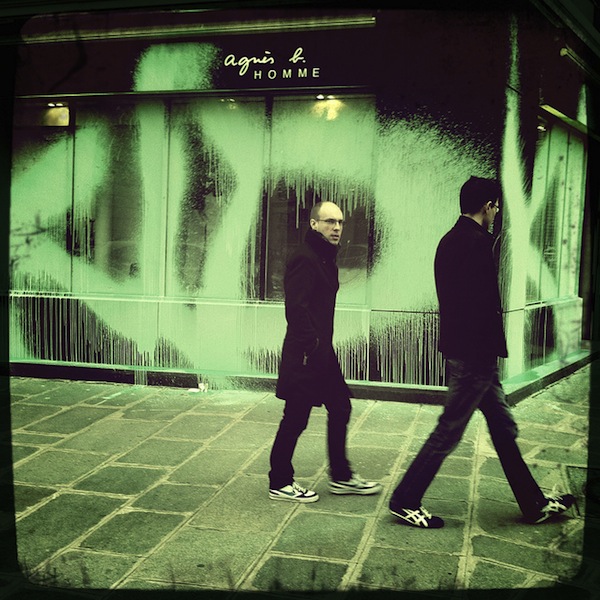
A note from RJ: After writing this, I read Rub Kandy‘s interview in the most recent issue of IdN, where he speaks about street art that is created for and best experienced on the web.
What do Kidult, Blu, Maismenos and Katsu have in common? They are all examples, although not the only examples, of artists using the internet in a similar way to how graffiti writers and street artists have traditionally used the streets. These artists are each trying to spread a message at all costs. That’s standard street art/graffiti. But with these artists, a traditionally static artform is turned into a performance, what they do might be fake or impossible to see in person and, most importantly, they see the spread of their work online as at least as important as the physical pieces.
Check out these videos from Kidult (the first one is hilarious), Blu, Maismenos and Katsu…
This later came out as potentially faked:
Kidult x MR Brainwash from eric on Vimeo.
KIDULT ITW (uncensored) “ILLEGALIZE GRAFFITI” from eric on Vimeo.
± THE OILY LAND ± from PlusqueMinusque on Vimeo.
This is fake:
This happened:
With all of those videos, the resulting films are more important than the actual physical artworks. And yet, they were all done by street artists and graffiti writers and include (or pretend to include) art that is generally considered street art/graffiti. Who cares if anyone ever sees any of those artworks in person, or if they are even real? Even in the case of the real works that are depicted in those videos, most of those were seen by far fewer people, or at least art/graffiti fans, than these videos. In the case of Katsu’s tag on MOCA, that was buffed in less than 24 hours and it was a while before the existence of the tag and the story of it being buffed was even confirmed. The important thing for these artists is that the videos get seen. These videos and photos are more impressive than the actual work they capture. The intended audience for these street pieces is not the public on the street. These, and many other, pieces of street art and graffiti were created with an online audience in mind rather than a physical one.
So what does this mean for street art if the streets and a medium for viewing street art are being used in this way? Is street art just as legitimate when specifically designed, executed and documented for an online audience? What about graffiti? Does it even matter if a piece is real, so long as people see it? I would say that, at least when it comes to graffiti, it does not really matter if a piece is real or not. So long as it creates fame. Of course, fake videos won’t work at creating fame forever, but they are a temporary technique that can accomplish one of the goals of graffiti. It seems the case is more murky with street art. Certainly the street art in these is still art and probably still street art, just maybe not “street art” as the term is generally understood today. I consider the work in The Underbelly Project to be street art and graffiti, but others do not because it had to be viewed through photographs. Street art that is specifically designed to be viewed through the filter of documentation is still street art, but it’s an evolution too. As I’ve said before, I think hacking is 21st century graffiti, so maybe the internet is the new “street.” It’s quickly becoming a better avenue for artists to show their work to the public than real life.
What do you think?
Photo by totordenamur
